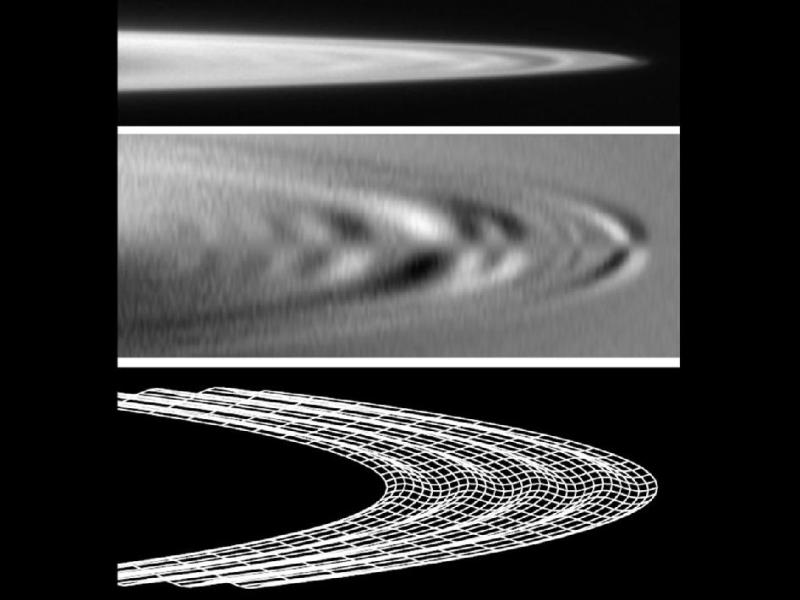Please note: Osher Rainforest will be closed for maintenance Jan. 14–16.
Science News
Ring Ripples Are Comet Clues
April 4, 2011

Two papers published in Science last week provide a new method of tracking comets in our solar system. By looking at planetary rings, researchers from Cornell University and SETI in Menlo Park have found undulating ripples, similar to the patterns in a corrugated roof, caused by passing comet debris.
The scientists used data from NASA's Cassini, Galileo and New Horizons missions (dating from 1996 to 2009) to search the ring systems of Jupiter and Saturn for patterns of cometary disruptions.
In the case of Jupiter, the ripple-producing culprit was the well-known comet Shoemaker-Levy 9, whose debris cloud hurtled through the thin Jupiter ring system during a kamikaze course into the planet in July 1994. Scientists attribute Saturn's ripples to a similar object—likely another cloud of comet debris—plunging through the inner rings in the second half of 1983. The researchers believe this comet passed through when Saturn was on the other side of the Sun from Earth.
“We now know that collisions into the rings are very common—a few times per decade for Jupiter and a few times per century for Saturn,” said Mark Showalter of SETI and lead author of the paper on Jupiter. “Now scientists know that the rings record these impacts like grooves in a vinyl record, and we can play back their history later.”
The tightness of the rings’ “grooves” gives clues to when the comet debris came hurling through, according to Nature News:
As time passed, this tilt has become a progressively tighter spiral, meaning that the shorter the ripple's wavelength, the longer ago it was formed.
(Discover has a great NASA video of the rings becoming tighter with age on their site.)
The ripples also give scientists a measurement of the size of the clouds of cometary debris that hit the rings. In each of these cases, the nuclei of the comets were a few kilometers wide before they likely broke apart.
“Finding these fingerprints still in the rings is amazing and helps us better understand impact processes in our solar system,” said Linda Spilker, Cassini project scientist, based at NASA's Jet Propulsion Laboratory, Pasadena, Calif. “Cassini's long sojourn around Saturn has helped us tease out subtle clues that tell us about the history of our origins.”
“What's cool is we're finding evidence that a planet's rings can be affected by specific, traceable events that happened in the last 30 years, rather than a hundred million years ago,” said Matthew Hedman, of Cornell and lead author of the Saturn paper. “The solar system is a much more dynamic place than we gave it credit for.”
Image credit: NASA/JPL-Caltech/SETI